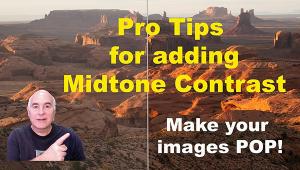Low light sharpness and good depth-of-field control are the reasons I have these prime lenses. Zooms do not measure up.
Please comment briefly on what you see as the advantage of a fast prime lens.
- Log in or register to post comments

As someone who started out in 1969 with manual everything Konica 35 mm SLR with a 50mm f 1.4 lens I have found this to be an indispensible tool for capturing light in the search for expression. Before there was AMEX we said of such a set-up, "Don't leave home without it!"

I have a high-ratio zoom, faster small-ratio zooms and fast primes. When shooting in low-light situations, sometimes the fast primes are the best choice to keep ISO values within the camera's best performance range while allowing reasonable shutter speeds.

My 50/1.4 is my "carry-around" lens on my Sony Alpha DSLR. I use it for "street photography" and informal portraits. If I'm off to the country for some general shooting, then I carry my gadget bag with two zoom lenses, a macro lens, and a pinhole adapter for my Sony. However, the 50 is what stays on the camera the most.

For me, However, the fixed aperture zoom lens does give better all-around sharpeness at any five focal length than the variable aperture zoom lens. So for me, when I want a zoom portrail lens I use my 28-75 f2.8 Tamron or my 80-200 f2.8 Nikon.

I have and use prime lenses, but only for purposes zooms don't exist, like fisheyes and macro lenses. For me the biggest advandage of zooms over primes is that they allow you to compose perfectly. Composition is allmost everything for me.

I use Primes in 100mm focal length and below for ultra sharp "money" shots. Sometimes I frame the shot with a zoom to determine which focal length prime to use instead of trying several primes. I use zooms when I'm moving fast and for most telephoto shots, except with my 600mm prime. Not all primes are sufficiently sharp, so you need to run comparative tests of your camera maker's and independent lens maker's various offerings in similar focal length before buying. You'd be amazed at the difference once you display the image on screen at high magnification. Buy primes wisely!

Almost all of my shooting is of the walk around type - travel, portraits, etc - and I rely 100% on 3 zooms which cover 17mm to 300mm. This so far has met my needs completely and I don't have to keep thinking about trying a different lens; not to mention the time to switch out and lug a lot of different glass around. I also make 11x19 prints and sell them using this set up.

I do not currently own a prime long lens, and wish I did. I have always liked the quality, and the fact that I have to think a bit more when framing an image. When I can afford a good, faster prime lens in the 400 mm range, it will be mine.

The Canon EF 50mm 1.4 is my all time favorite lens, both for 35mm film and full frame digital. Lightweight, small package, superior optics, fast focusing, bright viewfinder, zoom with your feet, exposure becomes second nature. I own big heavy zooms but always return to my 35mm, 50mm and 85mm primes.

I prefer high-ratio zoom lenses. If I need shallow depth of field I use the maximum zoom focal length. One good advantage of a prime, fixed focal length lens with the wider aperture is that it allows more light to go into the camera for the auto-focus mechanism to better do its job. After years of shooting weddings with a fixed focal length lens, high-ratio zooms are a Godsend.

In addition to low light capability, fast lenses are important to me as I age since they provide a brighter image in the viewfinder. Also, they may tend to be sharper at actual shooting apertures since it would not be needed to shoot wide open at certain times. One would tend to shoot slower lenses wide open more often.

































